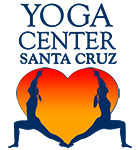Class Descriptions
Levels are intended to help students find the classes best suited to their overall current physical and mental state. For a more in depth exploration, please see the blog post, “What’s My Level” by Maya Lev. Many students spend several years at level 1-2 working to improve the basic poses, increasing their understanding and ability so they can attempt more challenging poses without fear of injury. Deep, true changes need time to develop and take root; for example, the opening of the hips and the mobility and stability of the spine and shoulders improves gradually, but unmistakably, with consistent practice.
Iyengar Style Yoga Classes
Introductory Series is recommended strongly for all students new to yoga or new to Iyengar yoga. The series covers basic poses, concepts and anatomy.
The Introductory Yoga series is offered a few times a year. In the meantime, feel free to drop in to any level 1 class.
Beginners and continuing beginners welcome.
Level 1: For students new to yoga, new to Iyengar style yoga, or returning to yoga after a hiatus. This level introduces and consolidates the basic principles of alignment of the standing poses, the seated poses, and the movements of the spine for beginning backbends, forward bends, and twists. This level is safe and appropriate for anyone with chronic or acute back, neck, knee, or hip injuries or other limitations.
Level 2: For students who have studied or practiced Iyengar yoga for six months or more, this level builds upon the concepts introduced in level 1. A student begins to increase his/her stamina and strength by holding postures for slightly longer times. At this level, students also begin to practice poses such as Setu Bandha (bridge pose) and supported Sarvangasana (shoulder stand). Additionally, students prepare for Sirsasana (headstand) by building strength and awareness of the core and upper body anatomy.
Level 3: Considered an intermediate level, this is for students who have a minimum of 2 or more years of Iyengar yoga, or are able to practice sirsasana and sarvangasana independently (unless there are contraindications.) A good indicator of readiness is the ability to maintain Adho Mukha Svanasana (downward facing dog) for up to five minutes. This level also asks students to maintain standing poses for 1 minute or more, seated poses for 3-5 minutes, and to work on intermediate backbends such as Urdhva dhanurasana.
Level 4: For advanced students with 5 or more years of Iyengar yoga experience, this level is for students interested in challenging their limitations. Being able to sustain sirsasana for 5 minutes or more is a good benchmark for this level, as well as being able to attempt variations of legs and arms in inversions. More advanced backbends such as eka pada rajakapotasana and forward bends such as kurmasana, as well as longer holds of twists and some arm balances are all practiced at this level.
Level 5: For the safety of the student and well being of the class as a whole, this level is for advanced students and teachers who have received permission from the senior instructor. Students should be familiar with or able to work on moving from Tadasana into Urdhva Dhanurasana (dropping from standing into backbend) and from Sirsasana to Dwi Pada Viparita Dandasana, as well as working towards Natarajasana and Eka Pada Sirsasana (leg behind the head pose). Students interested in attending this level should contact YCSC prior to class, or attend Kofi's level 2-3 class and discuss it with him directly. It is not required that students be able to perform these poses; rather it is required that students have the depth of understanding of their own bodies and the poses so they may practice them safely, with intelligence and awareness.
Special Yoga Classes
Chair Yoga is accessible for everyone. This wonderfully therapeutic practice will help you increase strength, balance, range of motion, stamina, mental awareness, and improve circulation. Suzi Mahler gently guides you through movements that are both traditional yoga poses and creative movements that are aligned with the breath to add lightness to the practice. Each class is safe, fun and informative.

Pranayama is the fourth petal in the eight petals of aṣṭāṅga yoga. This art and science of breath provides the bridge from the physical practice of yoga to a more internal practice, moving closer to understanding the true self within. By definition, prāṇāyāma is the practice of elongating inhalations, exhalations and the retention of breath. We receive our life force through inhalation, allow the energy through breath to percolate through retention (which is not part of the beginner practice), and exhalation is the act of surrender and letting go. The benefits to the respiratory, circulatory, digestive, and nervous system can be profound.
Pranayama I will be mostly practiced in the relaxed state of śavāsana. First, we must observe and understand the movement of the breath in the body. Through softness of body and receptivity in mind - then and only then- we can begin to intentionally move the breath.
This a beginning class. Pranayama can be practised sitting or lying down. Lori will start with students lying down to practise their breathing.
B.K.S. Iyengar on Pranayama: 'It frees the mind from the grasp of the body, sharpens the intellect and illuminates the self.'








